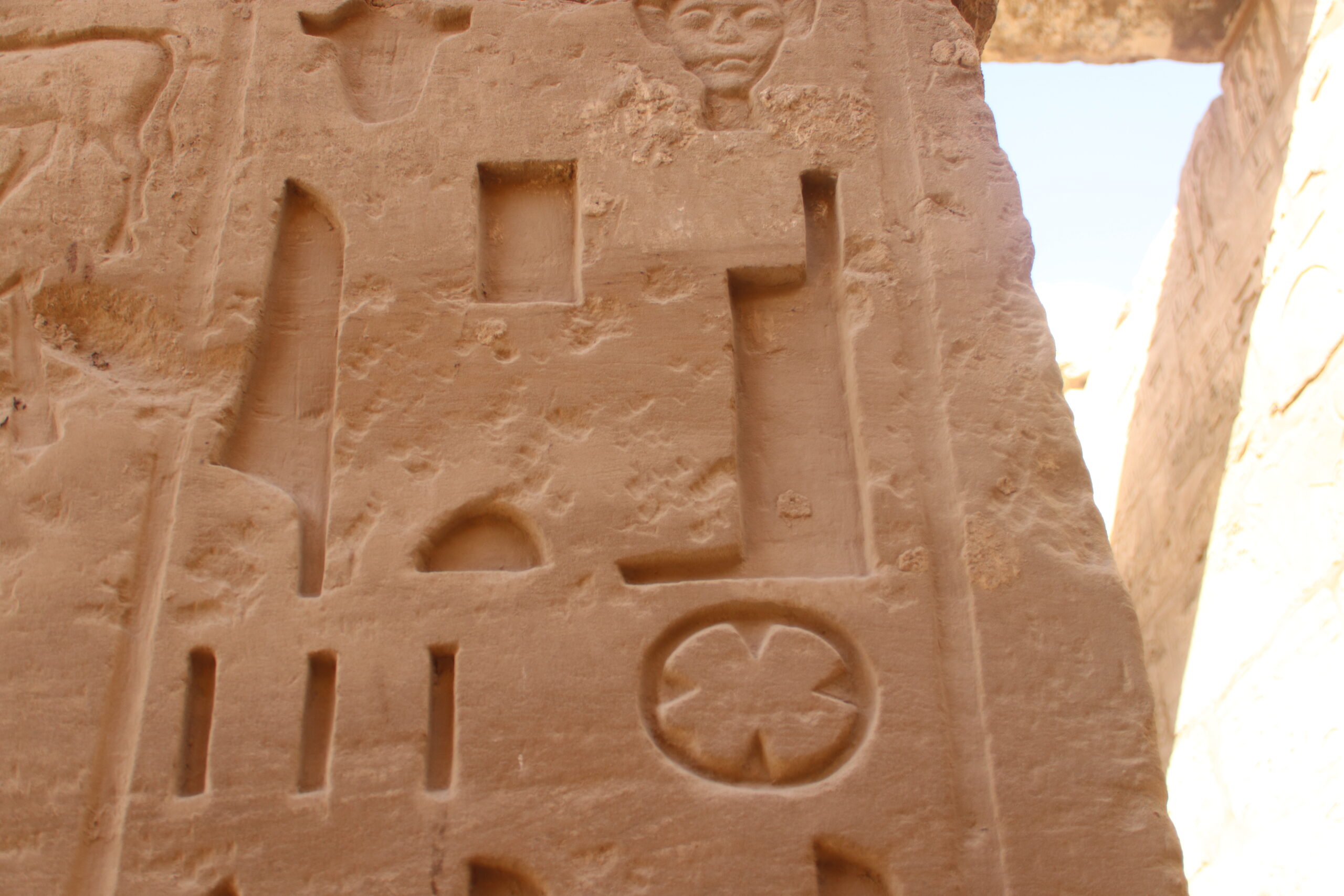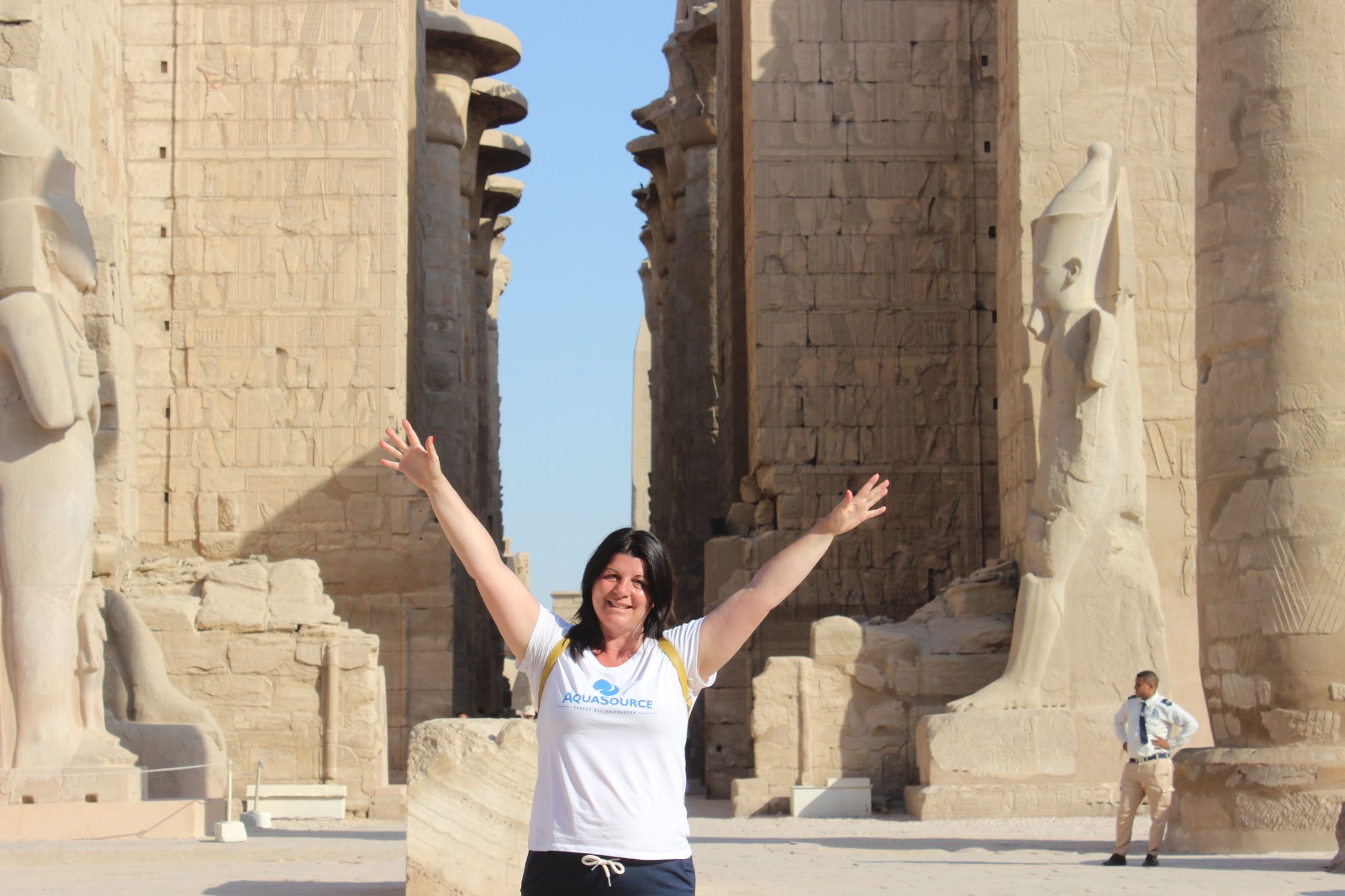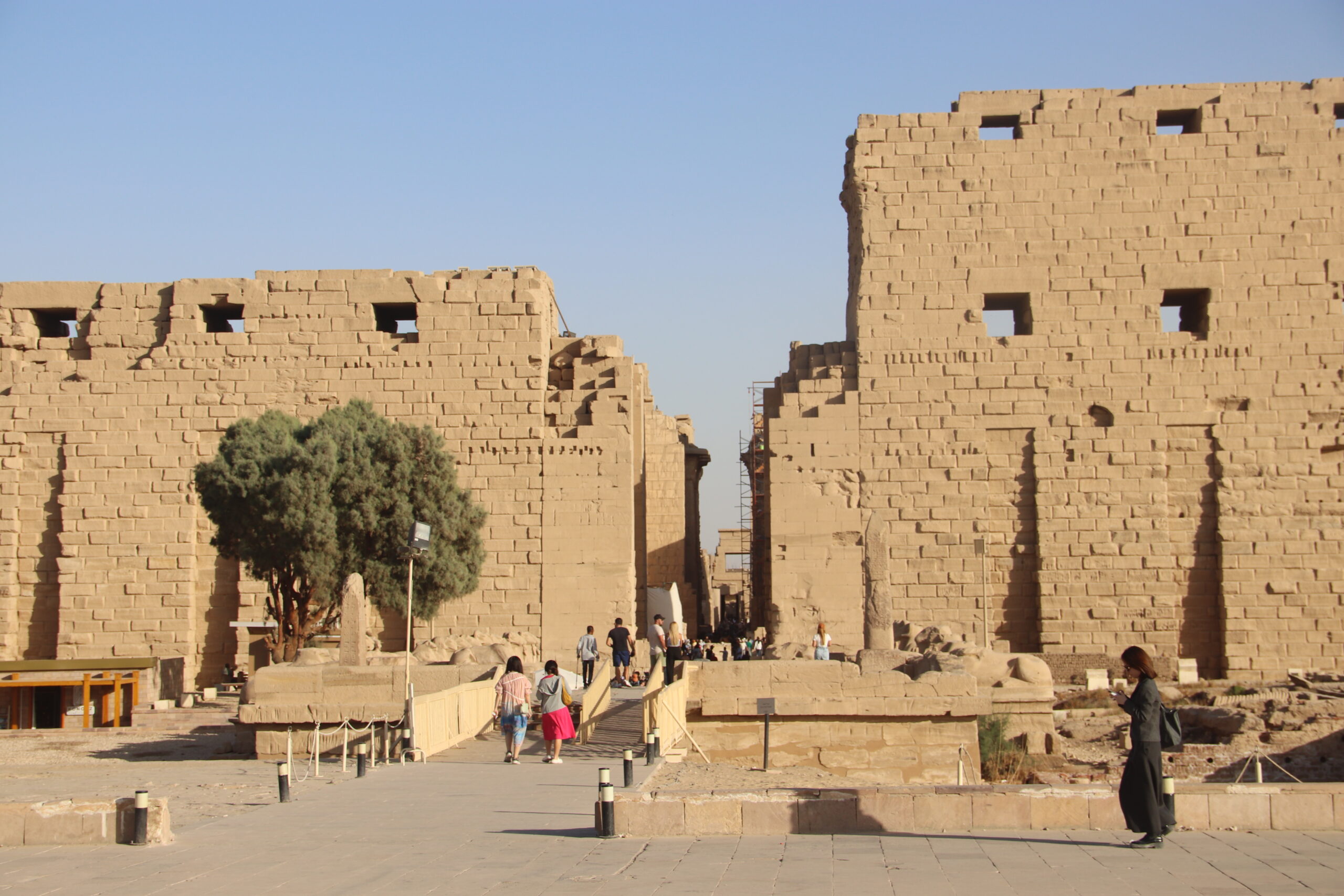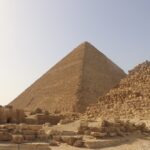Introduction 
Ancient Egypt is home to many significant cities and temples, with Thebes standing out as one of the most renowned. This city served as a crucial religious hub and the final resting place for the kings of the New Kingdom. The tombs, such as those found in the Valley of the Kings and Queens, are situated on the western bank of the Nile, nestled within the limestone cliffs of the region. Along the floodplain of the Nile, one can find the mortuary temples of numerous New Kingdom rulers. Meanwhile, the residences and workshops of the ancient Thebans were situated on the eastern bank of the river. Today, little remains of the ancient city, as it is now concealed beneath the modern city of Luxor. The religious core of Thebes is primarily represented by a series of significant temples that have endured the test of time. To the south, near the Nile’s banks, lies the temple of Luxor, while to the north, connected by the sphinx alleyway, are the temples of Karnak. Karnak is divided into four sections: south Karnak, featuring the temple of the goddess Mut; east Karnak, housing a temple dedicated to the Aten; north Karnak, where the temple of the god Montu stands; and central Karnak, home to the temple of the god Amun. The Karnak temple complex underwent over 1,500 years of construction, destruction, renovation, and modification, resulting in a complex network of structures and courtyards attributed to various rulers. The funding for these grand projects was primarily the prerogative of the ruler, with their name prominently displayed on most monuments at Karnak.
The temples of Karnak are a vast complex of temples, chapels, pylons, and other structures that were built over a period of more than 2,000 years, from the Middle Kingdom to the Ptolemaic period. The most famous and impressive part of the complex is the Great Temple of Amun, dedicated to the god Amun-Ra, the king of the gods in ancient Egypt.
The Great Temple of Amun is a massive structure that covers an area of over 200 acres and is surrounded by a large mudbrick enclosure wall. The temple is entered through a series of monumental pylons, or gateways, that are adorned with intricate carvings and hieroglyphics. Inside the temple, there are a series of courtyards, halls, and sanctuaries, each grander and elaborate than the last.
One of the most striking features of the temple complex is the Hypostyle Hall, a vast hall with 134 massive columns, each over 20 meters tall and adorned with intricate carvings and hieroglyphics. The hall is considered one of the greatest architectural achievements of ancient Egypt and is a testament to the skill and craftsmanship of the ancient Egyptian builders.
The temples of Karnak also contain a number of smaller temples and chapels dedicated to other gods and goddesses, as well as a sacred lake where priests would perform rituals and ceremonies. The complex was a center of religious activity and pilgrimage in ancient Egypt, and it was believed to be the dwelling place of the gods on earth.
Today, the temples of Karnak are one of the most popular tourist attractions in Egypt, drawing visitors from around the world to marvel at the grandeur and beauty of these ancient structures. The temples stand as a testament to the power and wealth of ancient Egypt and serve as a reminder of the incredible achievements of this ancient civilization.
- The Visit




The temple complex of Amun at Karnak is a combination of various structures and elements that come together to create a massive building. Upon reaching the temple, visitors today would pass through the ceremonial tribune and walk down an alley lined with sphinxes. This path extended from the temple’s west side towards the Nile, serving as the primary entrance to the temple from the 22nd Dynasty onward.
Before entering the temple, individuals would go through a grand stone pylon known as the first pylon, which, interestingly, was the last one constructed at the temple. The temple was divided into different sections by a total of ten pylons, with nine additional pylons following the first one. These pylons created both an east/west and a north/south axis within the temple complex. The pylons are now numbered from west to east (pylons 1-6) and then from north to south (pylons 7–10), although this numbering system does not reflect the actual order of construction, as the earliest temple structures are situated behind the sixth pylon. - After crossing the initial pylon, the visitor found themselves in one of the temple courtyards. This particular open-air court, known as the “first court,” encompasses a colonnade and encloses several smaller structures. The first court leads to the second pylon, which then leads to the hypostyle hall. This hall features a central raised nave and is supported by a multitude of sandstone columns, resembling a vast forest. Interestingly, the rear wall of the hall originally stood independently as the third pylon.
- Continuing further into the heart of the temple, one would come across a series of towering stone obelisks. These obelisks, each carved from a single piece of granite, were strategically placed in significant locations both within and outside the temple. However, the true essence of Karnak lies within its sanctuary. Located at the very center of the structure, this sanctuary housed the statue of the revered god Amun-Ra and served as the site for the temple’s daily rituals. The god’s image was safeguarded within a stone naos or shrine.
- The surrounding sanctuary would have also contained chambers for storing important and valuable cult equipment. Karnak’s sacred lake is situated on the southern side of the temple, providing water for cult activities and hosting special rituals involving the god’s bark. Moving southward, the Karnak pylons form another primary entrance to the temple, marking its southern axis. This axis played a crucial role in the temple’s involvement in festivals and processions, leading to the temple of the Goddess Mut in the south and connecting Karnak with the Luxor temple.







